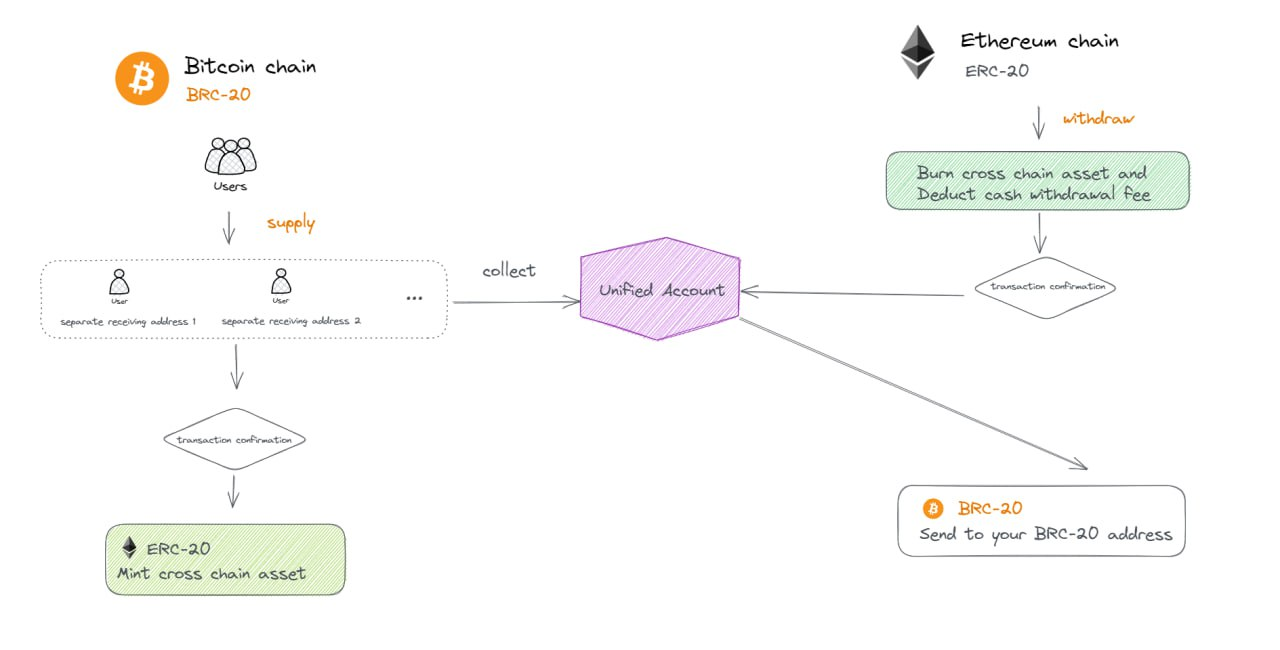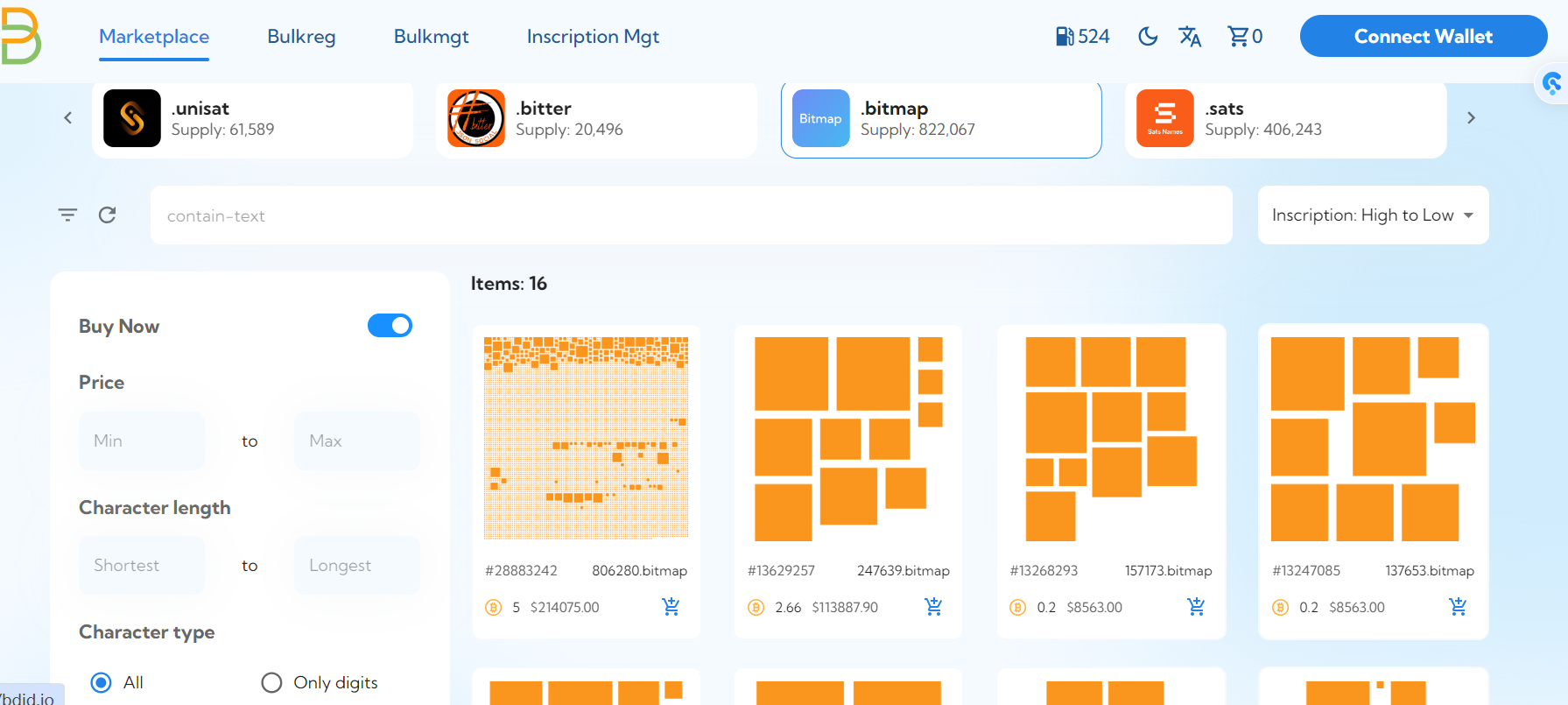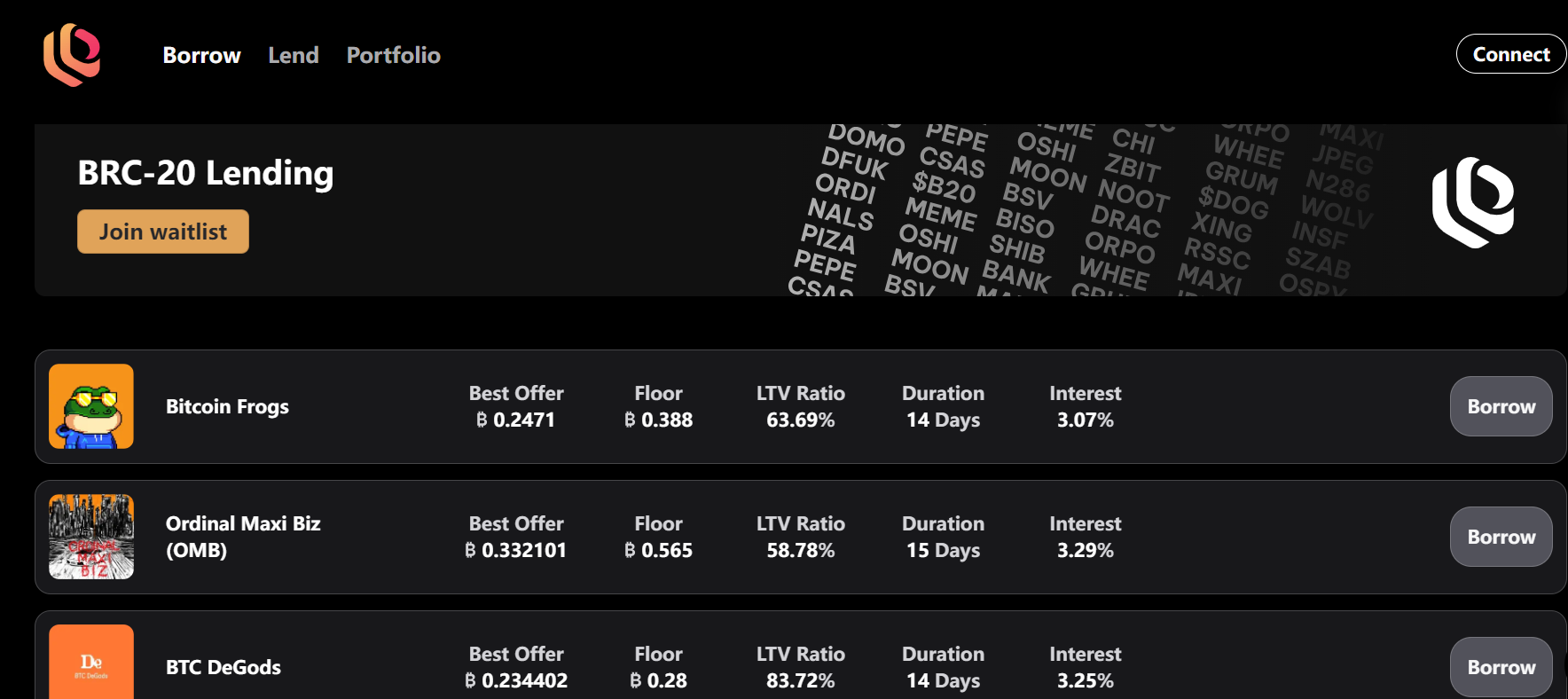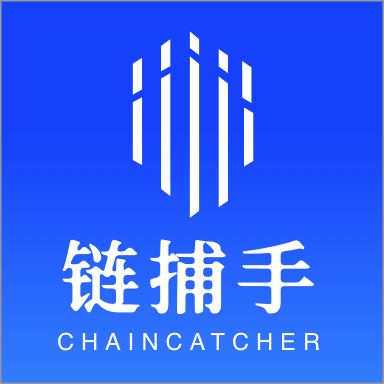Seize the new trend of Bitcoin ecology and take a look at the potential projects on the BRCFi track
Original author: Xiyou, ChainCatcher
As BRC 20 tokens such as ORDI, SATS, and RATS continue to rise, the popularity of the Bitcoin ecosystem has also increased. Bitcoin ecological applications and infrastructure surrounding Ordinals inscriptions and BRC 20 have sprung up.
According to data from encryption platform Rootdata, since December, multiple applications within the Bitcoin ecosystem have announced that they have received financing.
On December 20, ALEX Lab, a one-stop DeFi service platform based on Bitcoin Stack, received strategic investment from LK Venture, a subsidiary of Linekong Interactive.
On December 18, the Bitcoin BRC ecological aggregation tool set Biis announced that it had received strategic investment from the crypto investment institution CGV; the DID market aggregator GoDID completed a new round of financing led by NGC at a valuation of 30 million. In the past few days, GODID The sub-platform bdid.io focuses on the BTC ecosystem and issued the token BDID.
On December 16, Tap Protocol, a Bitcoin infrastructure project used to build OrdFi applications, completed US$4.2 million in financing, led by Sora Ventures; on December 14, bitSmiley, a Bitcoin stablecoin lending protocol, completed a round of funding from ABCDE and OKX Ventures Led the financing; on December 11, Bitcoin Ordinals lending solution Liquidium completed a $1.25 million Pre-Seed round of financing, with participation from Bitcoin Frontier Fund, Sora Ventures and others.
On December 7, the cross-chain protocol MAP Protocol announced that it had received strategic investment from DWF Labs and Waterdrip Capital and had achieved BRC 20 cross-chain; the Bitcoin pledge project Babylon announced the completion of an $18 million Series A round of financing, led by Polychain Capital and Hack VC, etc. .
In less than 2 weeks, a total of 8 projects related to the Bitcoin ecosystem have received financial support from crypto capital, covering cross-chain, lending, staking and other products, and they are all financial application products built around new assets such as Ordinals and BRC 20. .
With the influx of funds, the wealth effect of the Bitcoin ecosystem continues to ferment, gradually evolving from the hype of BRC 20 inscriptions to infrastructure and application products built around these assets, such as the Bitcoin ecosystems IDO platform Bounce Finance token AUCTION , the cross-chain bridge Multibit token MUBI, the stable currency BitStable governance token BSSB, etc. have all increased by more than 100% in the past seven days. With the strong support of capital and the surge in Bitcoin ecological application assets, a new track, BRCFi, has been born.
BRCFi refers to the DeFi ecosystem driven by BRC 20 tokens, and DeFi application products built around BRC 20 and Ordinals assets. Currently, the BRCFi track has launched multiple cross-chain bridges, stable coins, IDO platforms, lending and other suite products. So, what are the representative products of BRCFi applications? How is the operation going?
BRCFi suite of Bounce Finance trading: cross-chain bridge, stable currency, IDO platform, etc.
Bounce Finance (AUCTION) centralized auction platform takes off with the help of Bitcoin
Bounce Finance (AUCTION) was originally a multi-chain decentralized auction platform, providing services such as token issuance and NFT auctions, simplifying the process of new project IDO, etc. The platform was founded by Jack Lu and Ryan Fang in September 2020. Jack Lu is also a partner of NGC Ventures. Born in the era of the explosion of DeFi applications, the Bounce Finance application was not outstanding, and as the encryption market went bearish, the platform gradually faded out of the sight of encryption users.
But in November, the Bounce Finance platform quickly became popular for issuing the Bitcoin ecosystems cross-chain bridge Multibit token MUBI and the stable currency BitStable token BSSB. MUBI and BSSB have increased dozens of times after the Bounce Finance platform IDO. The wealth effect brought by these IDO assets has also made the Bounce Finance asset issuance platform hidden behind it the biggest winner, and is regarded by users as the next ten-fold increase. The birthplace of coins.
In the past month, 3 Bitcoin ecological project tokens have been successfully issued on the Bounce Finance platform. On November 12, the Bitcoin cross-chain bridge MultiBit asset MUBI was issued. The unit price of IDO was US$0.00047, and the current quotation is US$0.39. The cumulative increase exceeded 1,000 times; on November 29, the Bitstable project token of the cross-chain stablecoin protocol based on Bitcoin was launched. In the public sale of BSSB, the cost of each BSSB IDO is about US$0.27, and the current price is US$9.5, with a cumulative increase of about 40 times; on December 15, the GoDID token BDID, a DID service platform within the Bitcoin ecosystem, was launched, with a public sale price of US$0.0029. , currently quoted at $0.06, with a return of more than 20 times.
Because of the stories of IDO projects skyrocketing and creating wealth one after another, Bounce Finance has become an IDO welfare platform within the Bitcoin ecosystem. After successfully issuing the Bitcoin ecological asset MUBI, Bounce Finance officially announced a series of actions to enter the Bitcoin ecosystem.
On November 25, Bounce Finance posted on social media that it was preparing to extensively cultivate the BTC ecosystem and announced that it would focus on incubating and providing auction support for BTC projects.
On December 1, the company announced the launch of Bounce Bit, a Bitcoin DeFi application chain based on Binance BTCB. Among them, BTCB is a wrapped asset issued by Binance that anchors BTC real assets at a ratio of 1:1. Users can obtain BTCB by locking BTC, allowing BTC holders to use BTCB to participate in the chain without giving up their Bitcoin positions. DeFi activities to earn more. The Bounce Bit network will build a series of DeFi applications around BTCB and the native token AUCTION assets.
On December 6, Bounce Finance announced that it would upgrade its brand to Bounce Brand. Its products include Bounce Bit, a Bitcoin-based application chain, Bounce Box, a one-stop portal for exploring Bitcoin DeFi applications, and Bounce Auction, a Bitcoin ecological asset auction platform.
On December 19, Bounce Brand stated that IDO will use the kill two birds with one stone strategy to launch token issuance. Two independent teams will jointly issue a token. The identity of the project will be kept confidential. AUCTION and BitStables stable currency DAII will be used to participate. There will be two an auction pool.
Taking advantage of this trend in the Bitcoin ecosystem, Bounce Finance has successfully transformed from an auction platform forgotten by users into a leading IDO application deeply involved in the Bitcoin ecosystem. Among them, the native token AUCTION has increased by approximately 108% in the past seven days, and exceeded 40% yesterday. It is currently quoted at US$40.78, with a market value of US$260 million.
Bitcoin cross-chain bridge protocol Multibit
Multibit Bridge (MUBI) is a cross-chain protocol within the Bitcoin ecosystem that supports BRC 20 and ERC 20 assets to easily cross-chain, allowing cross-chain transmission of assets between EVM networks such as Ethereum and BNB Chain and the Bitcoin network.
MultiBit simplifies the cross-chain transfer process of tokens between Bitcoin BRC 20 and the EVM network. The specific cross-chain implementation process is as follows: first, the user deposits the cross-chain BRC 20 tokens into the BRC 20 address provided by Multibit. After the Multibit protocol is confirmed, the tokens will be minted on the corresponding EVM target chain and released to the user. When a user wants to cross BRC 20 tokens back, Multibit will destroy the corresponding number of tokens from the EVM chain and release the corresponding BRC 20 tokens on the Bitcoin chain.

However, Multibits goal is not just a cross-chain bridge, but will also integrate a multi-faceted BRCFi application ecosystem such as OAMM transactions, revenue aggregators, and stablecoin issuance in the future.
Among them, OAMM trading refers to the automatic market maker (OAMM) decentralized trading protocol launched by Multibit based on Ordinals assets. The trading platform is specially designed for trading Ordinals (ORDI) tokens. All fund pools are based on ORDI tokens. Pairing for price discovery; the revenue aggregator refers to optimizing the revenue of ORDI tokens in BRCFi applications; stablecoins are also minted with ORDI as collateral, etc.
The Multibit platform was first born in May, but it was not noticed before November. What made it successful was the launch of the MUBI token. On November 12, MUBI completed the IDO auction on Bounce Finance, with an opening increase of 1140 %.
The wealth effect brought by IDO has quickly made Multibit a star project in the Bitcoin ecosystem. The MUBI token has increased by approximately 131% in the past seven days, and is now quoted at approximately US$0.3. The total issuance is 1 billion, the circulation is 950 million, and the circulation market value is 2.9 One hundred million U.S. dollars.
Bitcoin Ecological Stable Coin BitStable
BitStable (BSSBDAII) is a stable currency protocol within the Bitcoin ecosystem. The application adopts the BSSBDAII dual-token system. The former BSSB is a governance token and the latter DAII is a stable currency.
Currently, platform users can use assets approved by BSSB Governance as collateral to generate DAII. Currently, only ORDI, MUBI and BTCB assets are supported as collateral. In addition, BitStable has cross-chained part of DAII to Ethereum, allowing DAII holders to exchange it with USDT.
As of December 19, the BitStable platform has minted 30.75 million DAII, of which 30.54 million are in ERC 20 format and only 210,000 are in BRC 20.
BitStable first appeared when it issued the token BSSB on the IDO platform Bounce Finance. It has increased by about 176% in the past seven days and is now quoted at US$7.5. The total issuance of BSSB is 21 million, with a market value of US$180 million.
However, it should be noted that the BitStable protocol has been controversial since its launch. First, the official website could not be opened during the BSSB token public sale, and users even doubted whether it was a Rug. The official stated that it encountered an issue carefully planned by miners and high-tech developers. Coordinated attacks and DDOS attacks resulted in uneven distribution of tokens, unauthorized wallets obtained most of the available supply, and the team destroyed 75% of the tokens auctioned. The BitStable X social media account was only online for two days at the time of the auction, and the first content posted was on November 27.
In addition, some users said that the three projects of Bounce Finance, Multibit and BitStable are from the same team, aiming to create a Bitcoin ecosystem that integrates IDO, cross-chain, and stable coins. This guess is not fabricated out of thin air, it is well-founded. Both Multibit and BitStables IDOs are executed on the Bounce Finance platform, and future IDO projects on the Bounce Finance platform can use BitStables stable currency DAII as participation tickets, and BitStable supports MUBI. Assets, etc. are used as collateral to cast DAII, etc. The three are inextricably linked.
DID market aggregator GoDID launches Bitcoin ecosystem DID management tool Bdid.io
Like Multibit and BitStable, the DID aggregation tool GoDID also issued the token BDID on Bounce Finance, and announced on December 18 that it had completed a new round of financing led by NGC Ventures at a valuation of 30 million.
However, what is interesting is that Jack Lu, founder of Bounce Finance, is also a partner of NGC Ventures. Some users lamented that the products launched on the Bounce Finance platform are all related to NGC Ventures. NGC Ventures may be the real operator of a series of Bitcoin ecological projects such as Multibit.
GoDID is a market aggregator for decentralized identity DID. Its core function is batch search, query, registration, transaction and management of DID. It currently provides services for ENS, Space ID and Bitcoin Ordinals DID.
On December 15, GODIDs sub-platform Bdid.io issued the token BDID on Bounce Finance. Bdid.io is incubated by GODID. The platform can support mainstream DID registration, transaction and management of various suffixes created by the Ordinals protocol. For example, .sats, .bitmap, .btc, .unisat, .bitter, etc.

Among them, the total issuance of BDID is 500 million. The price of IDO on the Bounce Finance platform is approximately US$0.00297. The current quotation is US$0.04, with a return on investment of approximately 20 times.
Representative lending products: BitSmiley, Liquidium, Liquidium
Stablecoin lending protocol BitSmiley
BitSmiley is the stablecoin lending agreement MakerDAO+Compound of the Bitcoin ecosystem. This product mainly consists of a decentralized over-collateralized stablecoin agreement, a lending agreement and a derivatives agreement. On December 14, bitSmiley announced the completion of a round of financing led by ABCDE and OKX Venture.
Among them, bitUSD is a stable currency generated by BTC as an over-collateralized asset and softly linked to the US dollar. The mortgage mechanism is similar to MakerDAO, except that bitUSD is issued with BTC as a mortgage asset. Any BTC holder can deposit Bitcoin into The bitSmiley Treasury smart contract generates bitUSD, and every bitUSD in circulation is supported by excess collateral.
In the bitSmiley protocol, bitUSD can be used to settle debts, such as paying stability fees or loan interest. Users deposit a specific amount of BTC into bitSmiley Treasury to generate bitUSD. In order to get back the deposited BTC, users need to repay the generated bitUSD and pay a certain stable minting fee.
With the stablecoin bitUSD as the core, BitSmiley launched bitLending, a peer-to-peer lending protocol based on BRC 20.
At present, bitSmileys products have not yet appeared online, and the official Twitter account was only officially launched on December 4.
NFT and BRC 20 Lending Protocol Liquidium
Liquidium is a P2P lending protocol built on the Ordinals protocol, allowing users to borrow and lend Bitcoin using ordinal inscriptions and BRC 20 as collateral. On December 11, it was announced that it had completed a $1.25 million Pre-Seed round of financing, with participation from Sora Ventures and others.
Currently, the Liquidium platform only supports Ordinals ordinal inscription NFTs as collateral for lending. The BRC 20 lending product has not yet been officially opened to the public and is in the whitelist application stage.

The Liquidium platform does not use a liquidation mechanism based on the loan collateral value LTV. The status of the loan depends on the repayment within the set period. If it is not repaid at the maturity date, the loan is in default and the collateral belongs to the lender.
BRC 20 Ecological Stablecoin Lending Agreement Uplink Finance
Uplink Finance (UPFI) is a stablecoin lending protocol specially designed for BRC-20 asset investors such as ORDI and SATS. It claims to be the MakerDAO in the BRC-20 ecosystem. BRC 20 asset holders can release their assets without selling. Liquidity value.
On the Uplink Finance platform, users deposit BRC-20 assets such as BTC, ORDI, and SATS as collateral for over-collateralization and lending of the platform’s stable currency UPSD.
On December 12, Uplink Finance announced that SATS and ORDI will become the first collateral for the platforms stablecoin minting, and at the same time their assets will be airdropped to the users platform governance token UPFI.
At present, the mortgage lending page of the Uplink Finance platform has not been officially launched.
Ordinals ecological infrastructure tools: donation platform TurtSat and Tap Protocol for building OrdFi applications
TurtSat: Gitcoin within the Bitcoin ecosystem
TurtSat (TURT), its community-led Ordinals donation platform, is on a mission to become the Gitcoin of the Ordinals world. The platform features a donation protocol, which aims to allow more open source developers and communities to participate in the ecological development of Ordinals and enjoy benefits. Anyone can build and donate to the Ordinals ecological protocol through Turtsat.
In short, project parties can obtain funds through TurtSat, and users can earn income by supporting donation projects. Currently, the TurtSat platform supports the token issuance of multiple Bitcoin ecological projects in the form of Lanchpad, with functions similar to Bounce Finance.
As of December 20, the TurtSat platform has issued the BRC 20 asset protocol Chamcha token CHAX, the BRC 20 cross-chain bridge Multibit token MUBI, the Ordinals aggregation platform NXHUB token NHUB, the Ordinals lending platform Dova Protocol token DOVA, and the Bitcoin ecosystem. System game platform Rabbit token RAIT, Bitcoin ecological metaverse game Svarga token SVGR, etc. These projects are all infrastructure construction platforms related to BRC 20 and Ordinals within the Bitcoin ecosystem. Yesterday, the TurtSat platform will also launch the Bitcoin staking platform Zooopia token ZOOA.
On December 7, TurtSat announced the launch of a pledge fund pool for its native token TURT to support TURT holders to participate in projects that issue tokens on the platform to obtain more benefits. In addition, TurtSat will also issue a new asset EGGS, which needs to be obtained by pledging TURT tokens. EGGS can be exchanged for the whitelist of Launch projects. In the future, EGGS will be used in more scenarios such as project launch voting, direct exchange for cooperation token gift packages, etc.
Among them, TurtSats native token TURT has a maximum issuance of 1 billion, a temporary quotation of US$0.078, and a market value of US$78.73 million. The circulation volume of EGGS has not been disclosed.
Tap Protocol, the platform for building OrdFi
Tap Protocol is a platform launched by Ordinals index protocol Trac for building OrdFi applications. On December 16, it announced the completion of US$4.2 million in financing led by Sora Ventures.
Trac is an infrastructure project of the Ordinals ecosystem, aiming to provide a decentralized system to track and access Ordinals-related protocols, such as BRC 20, sats domain names, etc., to provide a basis for how to create, manage and trade digital assets on the Ordinals platform. Provides a standardized interface.
Tap Protocol is a platform used to build OrdFi applications. It will provide a series of tools to help developers build DeFi products based on Ordinals, even without the need for complex Bitcoin Layer 2 networks, such as providing inscription segmentation and enabling DeFi on inscriptions. application.
In the future, Tap Protocol will launch Ordinals fragmented products, exchange pools, lending and staking products.



